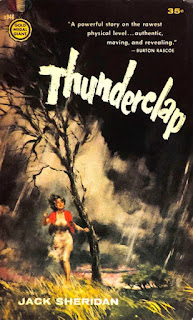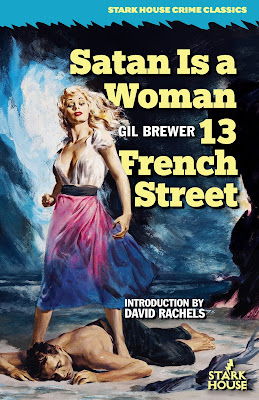Richard Jessup authored over 60 novels over his three decades as a published novelist. His most popular literary contribution is the five-book spy-fiction series Monty Nash and his western novel The Cincinnati Kid, which was adapted to a film starring Steve McQueen. Stark House Press published the author's Night Boat to Paris as a Black Gat Book in 2025, and they followed with this twofer containing two of Jessup's 1961 novels, Wolf Cop and Port Angelique. I reviewed the former already (here), so this review addresses Port Angelique.
Jessup's Port Angelique is an ambitious effort that features a variety of plots and over a dozen characters that fight for the reader's attention. Unlike Wolf Cop, or many of Jessup's fast-paced plot-propelled narratives, there isn't a main character or protagonist. Instead, this is an ensemble cast of islanders that each have their own life obstacles, challenges, and goals that share in the responsibility of maintaining the island and village.
The character I felt a closeness with is Stanley Fowler, the police commissioner of Port Angelique, a small fictitious Caribbean island in possession of the United States. Fowler's nemesis is a career criminal named Sabo de Chine, an islander that Fowler ran off years ago. However, Sabo has been spotted once again in Port Angelique and rumors abound that he's back with a new gang of criminals Hellbent on retrieving millions that Sabo left behind on his earlier departure.
I'm convinced Jessup's goal was to make Port Angelique a sweeping epic, yet was bound by Fawcett's limitation on a thinner page count. If Jessup were to attempt the novel 15 years later, I can foresee a brick book swelling at 350+ pages. When Hemingway was awarded a Nobel Prize for Literature in 1954 (The Old Man and the Sea), his contemporary style affected a number of writers. He defined a new, unique place in adventure fiction that focused on the subtle nuances of foreign locales and a careful character study of the inhabitants.
Jessup's conjuring of Hemingway, albeit with lesser poetic synergy, is a valiant effort to present this exotic culture rich with traditions, rituals, and customs. The author creates a fictional history of an Aztec adventurer named Xochimilco (named after the Aztec canal system) that battled Cortes in the early 1500s. Providing cultural texture to the region, Jessup includes narration on the island's fishing development, laborers, barkeeps, prostitutes, dime-store criminals, drug running, and political strife dominating the region.
Port Angelique is a challenging narrative with many moving parts. There's a bit of dedication involved in remembering the alliances and characters involved in the crafty development. While it doesn't require a Game of Thrones org chart, you do need to read this in one or two sittings for full effect. As a character study, the novel simply wins. It doesn't pretend to be a high-octane treasure-hunting adventure novel, but part of me was still hopeful it would transition into that for the third act.
Get the book HERE.





















